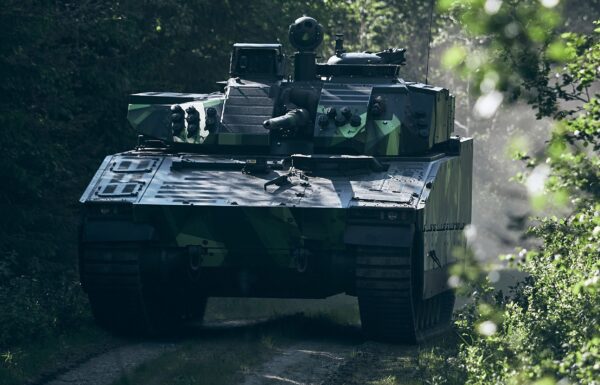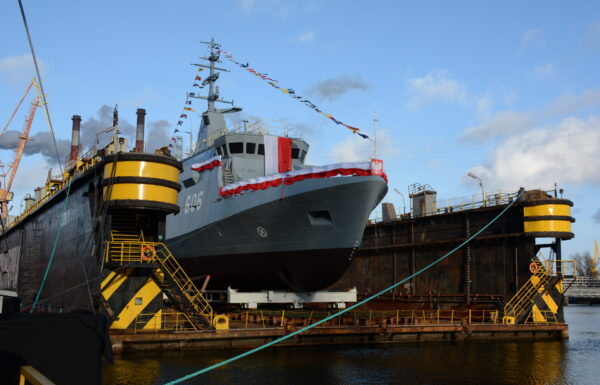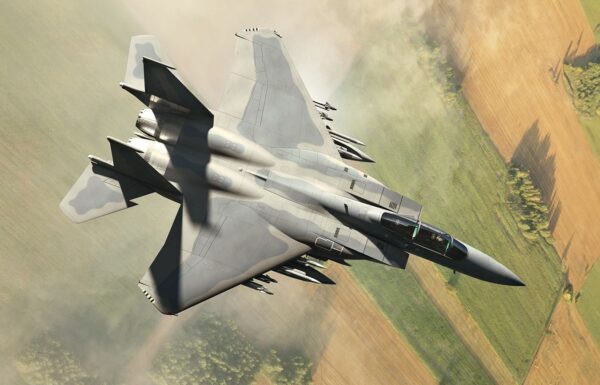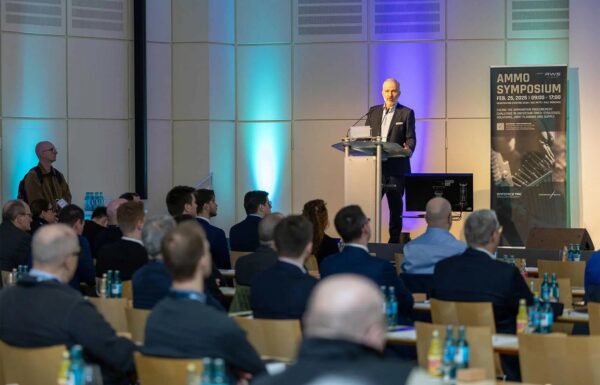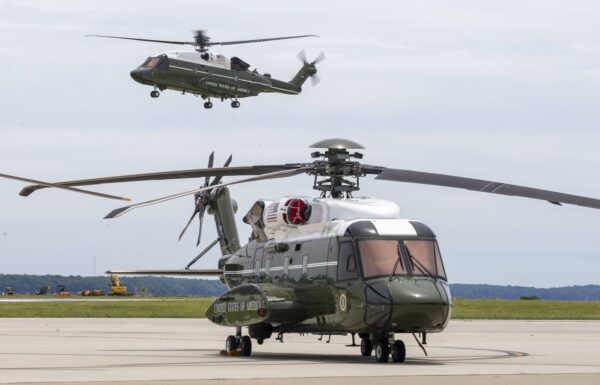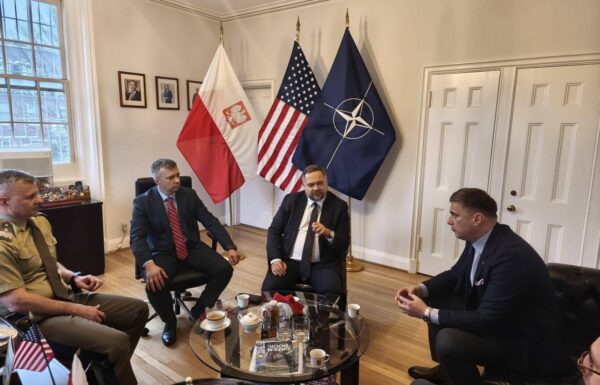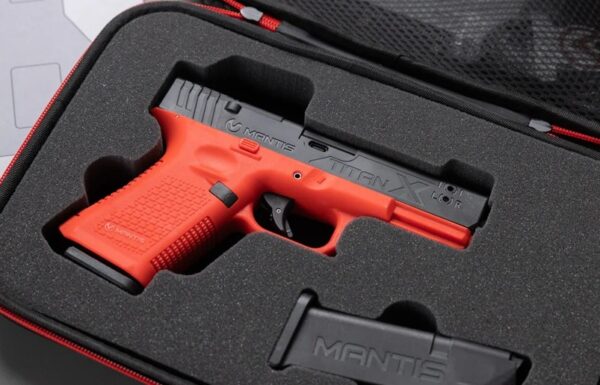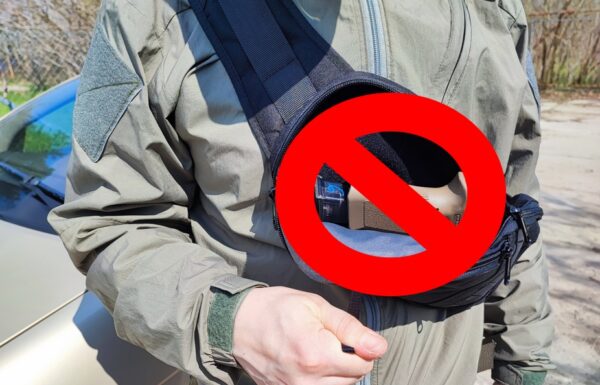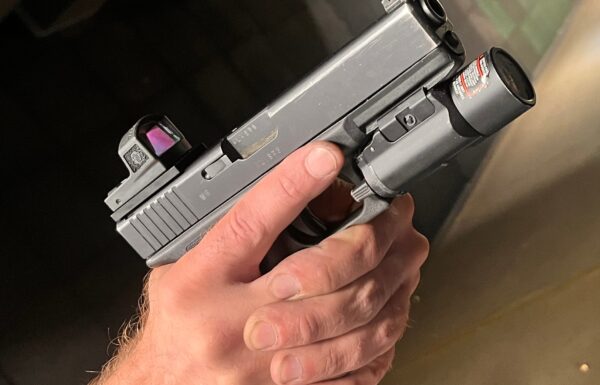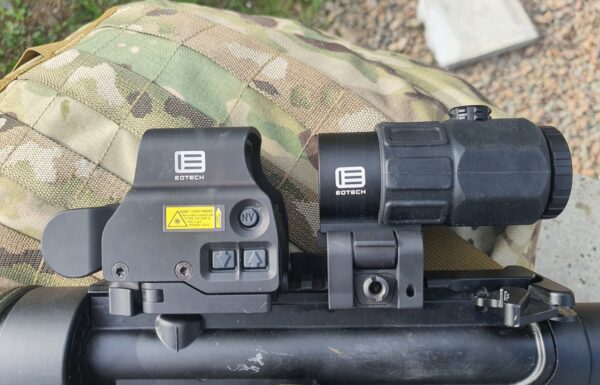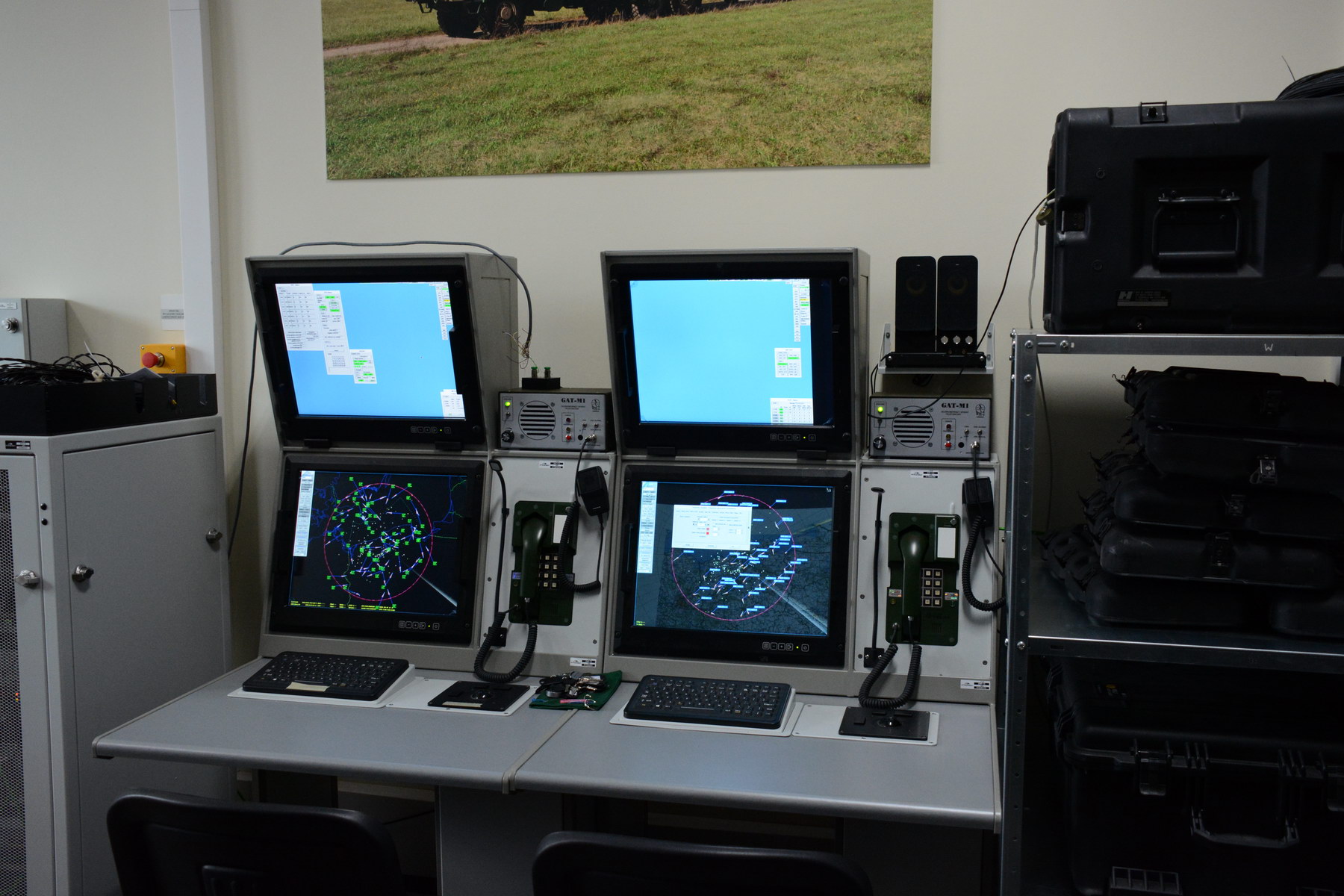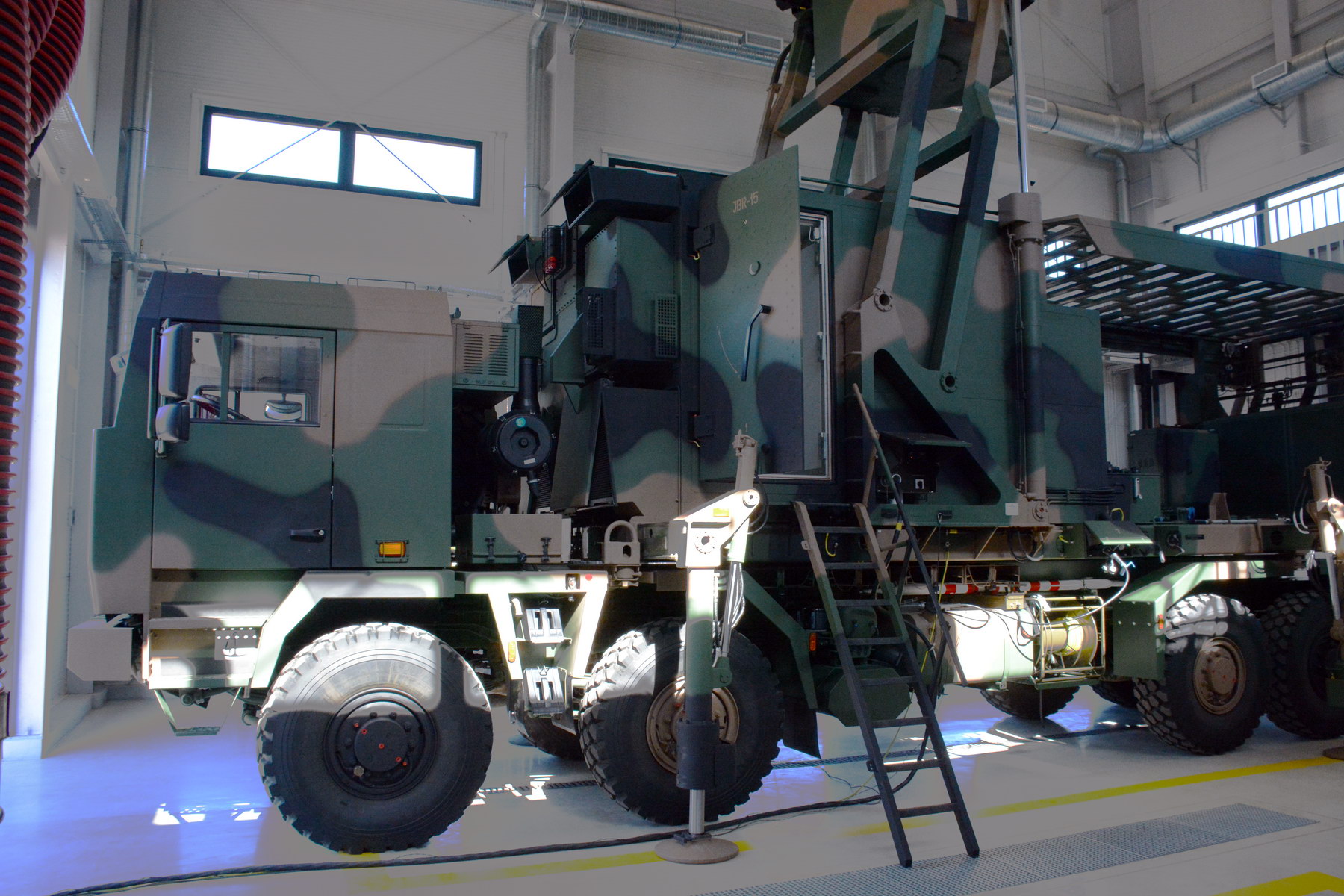The opening of the laboratory is an important event both for the Air Force Training Center (CSSP) and for the Radio-Technical Forces as a whole. It will enable the training of Odra radar station crews without having to use equipment deployed at operational posts, thus ensuring the continuity of combat readiness. As noted by the Head of the Radio-Technical Forces Directorate and Deputy Inspector of the Air Force, Brigadier General Jerzy Kwika, the implementation of this laboratory comes too late. It should have been introduced a few years after the first radars were received, not only after all deliveries were completed. Unfortunately, training-related issues are not treated as a priority, and their funding is often postponed.
 Ribbon-cutting ceremony in front of the NUR-15M radar station laboratory building, performed by Brigadier General Jerzy Kwika, Head of the Radio-Technical Forces Directorate and Deputy Inspector of the Air Force; Colonel Józef Trejder, Commander of the Air Force Training Center; Maciej Strzemecki, Head of the Command and Communications Directorate of the Armament Agency; and Marek Borejko, President of the Management Board of PIT-Radwar / Photos: Przemysław Gurgurewicz, MILMAG
Ribbon-cutting ceremony in front of the NUR-15M radar station laboratory building, performed by Brigadier General Jerzy Kwika, Head of the Radio-Technical Forces Directorate and Deputy Inspector of the Air Force; Colonel Józef Trejder, Commander of the Air Force Training Center; Maciej Strzemecki, Head of the Command and Communications Directorate of the Armament Agency; and Marek Borejko, President of the Management Board of PIT-Radwar / Photos: Przemysław Gurgurewicz, MILMAG
The core component of the laboratory is a TRS-15M radar station in the production version TRS-15-7, naturally without its vehicle chassis, JBR-15 radar unit platform, APR-15 power generators, or containerized housing. Due to its educational purpose, many elements have been specifically developed or adapted accordingly. For example, in the KPA and KAN cabins, access to components normally hidden in the operational station has been enabled, partly by creating inspection openings. In the case of the SNO-15-3 antenna segment and the ZAI-15 antenna assembly, the fairings can be removed to provide direct access to the radiating aperture. An essential part of the TRS-15M laboratory is the Multimedia Educational Set. It includes an extensive package of instructional materials, such as training videos, e-learning modules on the basics of radar technology, training on the operation and maintenance of the TRS-15M station, and a catalog of photos, block diagrams, and component descriptions of the system.
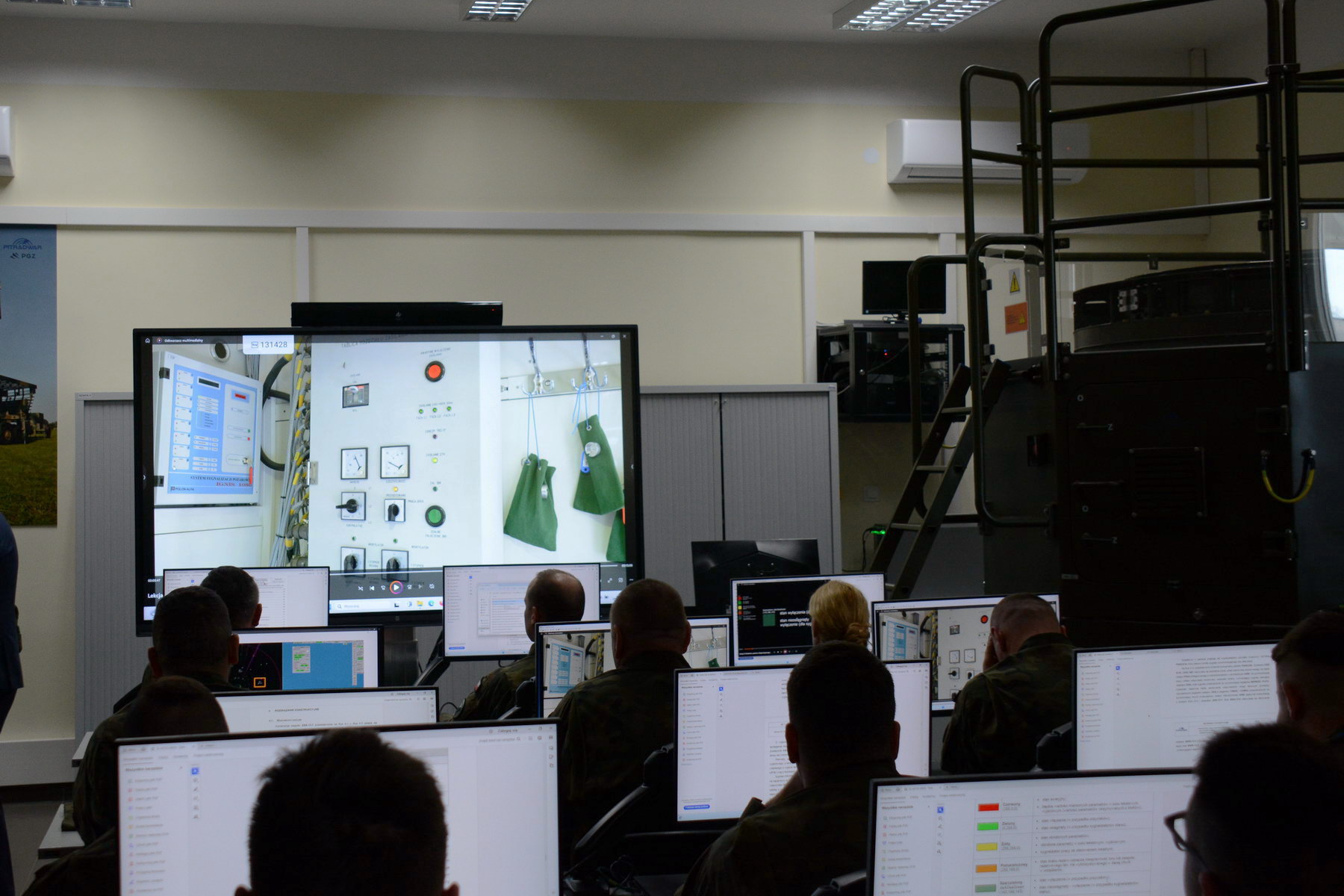 The laboratory enables radar crew training in comfortable conditions
The laboratory enables radar crew training in comfortable conditions
The TRS-15M laboratory enables both theoretical and practical training in the following areas:
- fundamentals of radar technology;
- construction, operation, and hands-on technical maintenance of the TRS-15M radar station and the KZS-15 remote radar control console;
- improving skills in diagnosing TRS-15M radar station faults and carrying out repairs;
- enhancing practical skills in performing maintenance, repair, adjustment, and measurement procedures (including access to additional measurement points not covered in the station’s documentation);
- mastering measurement and adjustment procedures as specified in the TRS-15M radar station’s operation manual and in the training program requirements;
- presenting the structure and functions of the main blocks, components, and functional systems of the TRS-15M radar station, the secondary radar (IFF system), and the KZS-15 console set with accessories;
- training in connecting and configuring the communication interfaces of the TRS-15M station and the KZS-15 console for integration with external systems.
 The room contains all the essential components of the station, including the SOP-15 operator consoles and the KZS-15 remote radar control consoles
The room contains all the essential components of the station, including the SOP-15 operator consoles and the KZS-15 remote radar control consoles
The 28th radar of the TRS-15 family, officially accepted into service yesterday, is the final unit and one of two produced under the last order placed on December 6, 2021. As stated by Brigadier General Jerzy Kwika, there are currently no procurement plans for additional radar stations of this type.
At present, TRS-15 family radars are operated by the Air Force — 24 units (two of the oldest, including the prototype, have already been retired) — and by the Naval Missile Unit, which uses two TRS-15C variant radars. The TRS-15M radars, codenamed Odra, currently serve as the primary medium-range system at 17 fixed radar posts operated by the 3rd Radio-Technical Brigade. They are supplemented by N-31/N-41 radar systems, which are being gradually phased out. The Odra radars also play a key role in improving radar coverage along the eastern direction, where they have been deployed in response to the ongoing war in Ukraine.
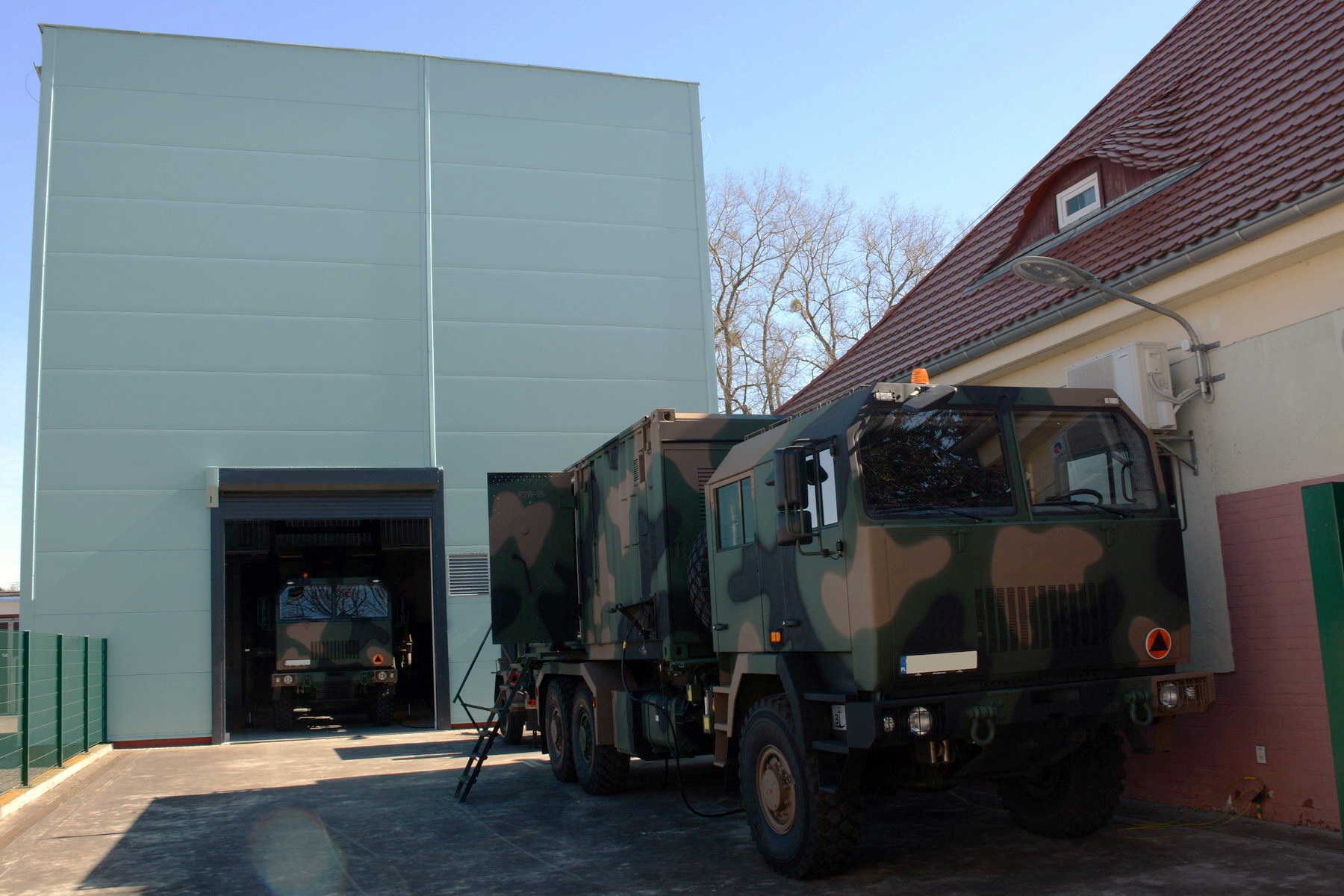 The TRS-15M radar at the Air Force Training Center is housed in a special building with a height sufficient to fully deploy the radar inside
The TRS-15M radar at the Air Force Training Center is housed in a special building with a height sufficient to fully deploy the radar inside
The TRS-15M Odra is a mobile, three-dimensional radar station operating in the S-band (2–4 GHz). It is classified as a medium-range system, with an instrumental range of 240 km and a target detection altitude of up to 30 km. Thanks to a hydraulic mast that elevates the antenna to a height of over 8 meters, the radar has enhanced capabilities for detecting and tracking low-flying targets. The station is equipped with an ISZ-50 interrogator of the Mark XIIA identification friend or foe (IFF) system, operating in NATO’s current Mode 5 standard.
In its configuration for the Radio-Technical Forces, the radar consists of two primary units mounted on vehicle chassis:
- Unmanned radar unit JBR-15 – this is the core radar device, equipped with a complete transmit-receive system and a main antenna mounted on a hydraulic mast, along with an IFF antenna.
- Mobile display station RSW-15, housed in a container equipped with air conditioning and a protection system against weapons of mass destruction. It contains two operator consoles, communication systems, and interfaces for integration with external systems.
The RSW-15 is connected to the JBR-15 via a fiber-optic link, allowing them to be positioned up to 1 km apart. Each unit is also equipped with its own ZPO 65 TDEZ power generator mounted on a towed trailer, providing independent power supply without reliance on external sources.
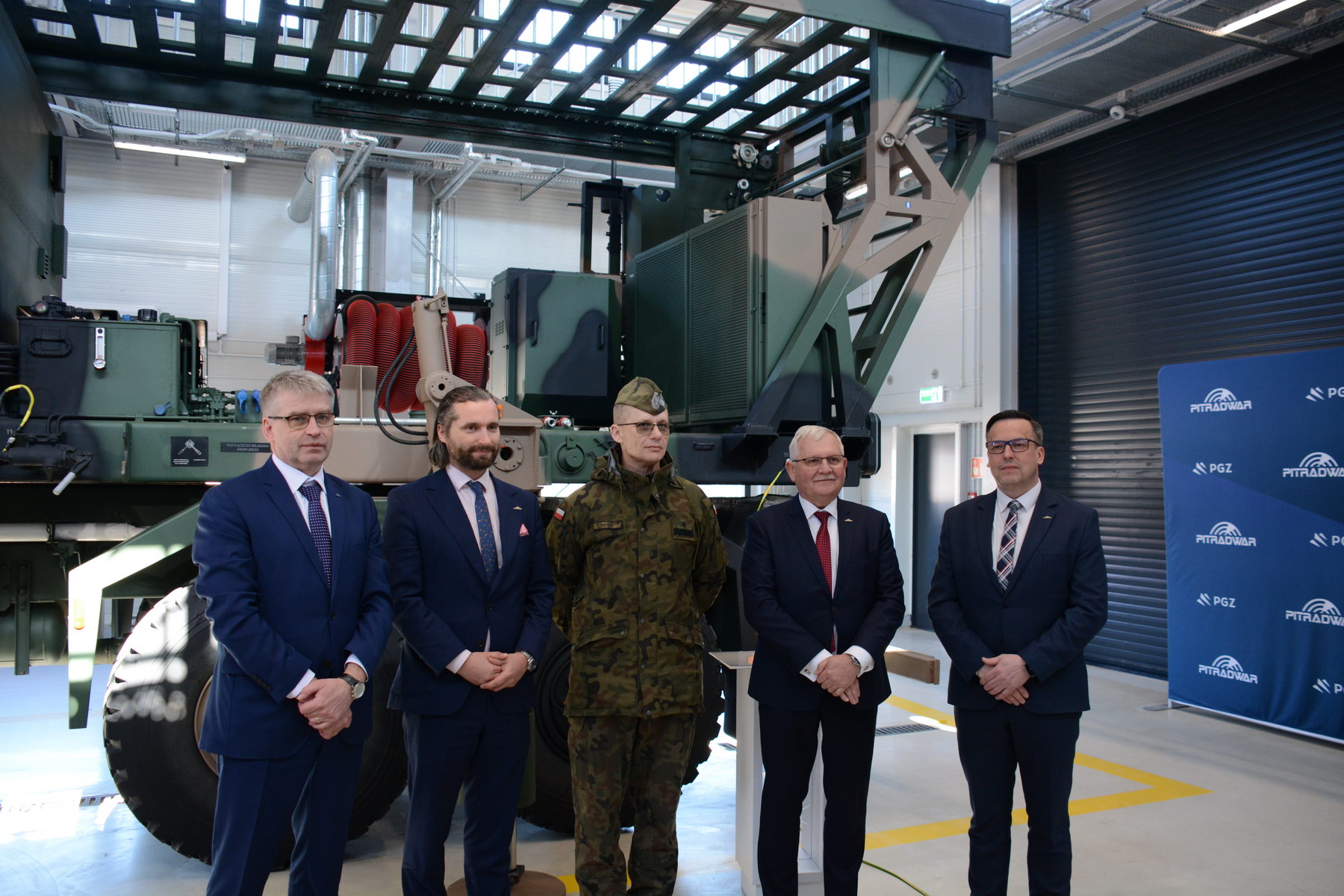 Brigadier General Jerzy Kwika and PIT-Radwar President Marek Borejko, along with their colleagues, pictured with the Air Force Training Center’s latest acquisition
Brigadier General Jerzy Kwika and PIT-Radwar President Marek Borejko, along with their colleagues, pictured with the Air Force Training Center’s latest acquisition
Initially, the TRS-15/TRS-15M radar stations were mounted on chassis produced by the Czech company Tatra (Tatra 815, Tatra 815 Armax, and Tatra 815 Terr No1), whose vehicles had long served as the traditional platform for Polish radar systems (prior to the Tatra 815, earlier models such as the Tatra 148 and Tatra 138 were also used in Polish designs). The first departure from this standard occurred with the TRS-15C radar variant for the Navy. In this case, the radar was mounted on a Jelcz chassis, which was selected as the standard vehicle for all components of the Coastal Missile Division (including launchers, command vehicles, communication nodes, and transport/loading vehicles). The TRS-15C consists solely of the unmanned radar unit JBR-15-5, mounted on a four-axle Jelcz P882D.43 truck. This variant lacks the RSW-15 mobile display station, as the operator’s console is integrated into the system’s command vehicle. Eventually, the chassis for systems intended for the Radio-Technical Forces was also changed. Starting with the vehicles ordered in September 2018, only Polish-made trucks have been used: the Jelcz P882D.43 for the antenna unit JBR-15-4 and the Jelcz P662D.43 for the RSW-15-4 operator cabin.
 The JBR-15-4 antenna unit deployed inside the training facility
The JBR-15-4 antenna unit deployed inside the training facility
The history of the TRS-15 radar family dates back to 1996, when the Industrial Telecommunications Institute (PIT) received an inquiry from India regarding the supply of an antenna unit (excluding processing and display systems) for a highly mobile radar operating in the S-band. In response, PIT developed a system designated CAR-1100, which was delivered in 1999. Based on the experience gained, a concept emerged to develop a version for the Radio-Technical Forces to replace the then-standard radar setup, consisting of the N-31, N-31M, or N-31MK rangefinder and the N-41 height-finder. That same year, after receiving funding from the Development and Implementation Department of the Ministry of National Defence, research and development work began, resulting in a prototype radar with the factory designation TRS-15. After successfully passing government testing in 2006, two implementation-phase units were produced and delivered in December 2007. A year later, in December 2008, an order was placed for two more units in the upgraded TRS-15M version, which incorporated feedback from the operation of the initial systems. The next order for radars in this family came in 2009, this time from the Navy. Two TRS-15C radars were designated to provide radar information for the newly acquired coastal defense system equipped with NSM anti-ship missiles, forming the armament of the then-forming Naval Missile Unit. The first major order for the Radio-Technical Forces came on January 25, 2013, when eight TRS-15M radars were ordered. Their deliveries were completed in 2017, paving the way for the next procurement. On September 4, 2018, the largest single order was signed for 11 additional radars, which were delivered between 2020 and 2023. During the delivery of that batch, another and final contract was signed on December 6, 2021, for two Odra radars intended to support training. One was delivered to the Central Air Force Training Range in Ustka, and the other is the unit now handed over to the Air Force Training Center in Koszalin.
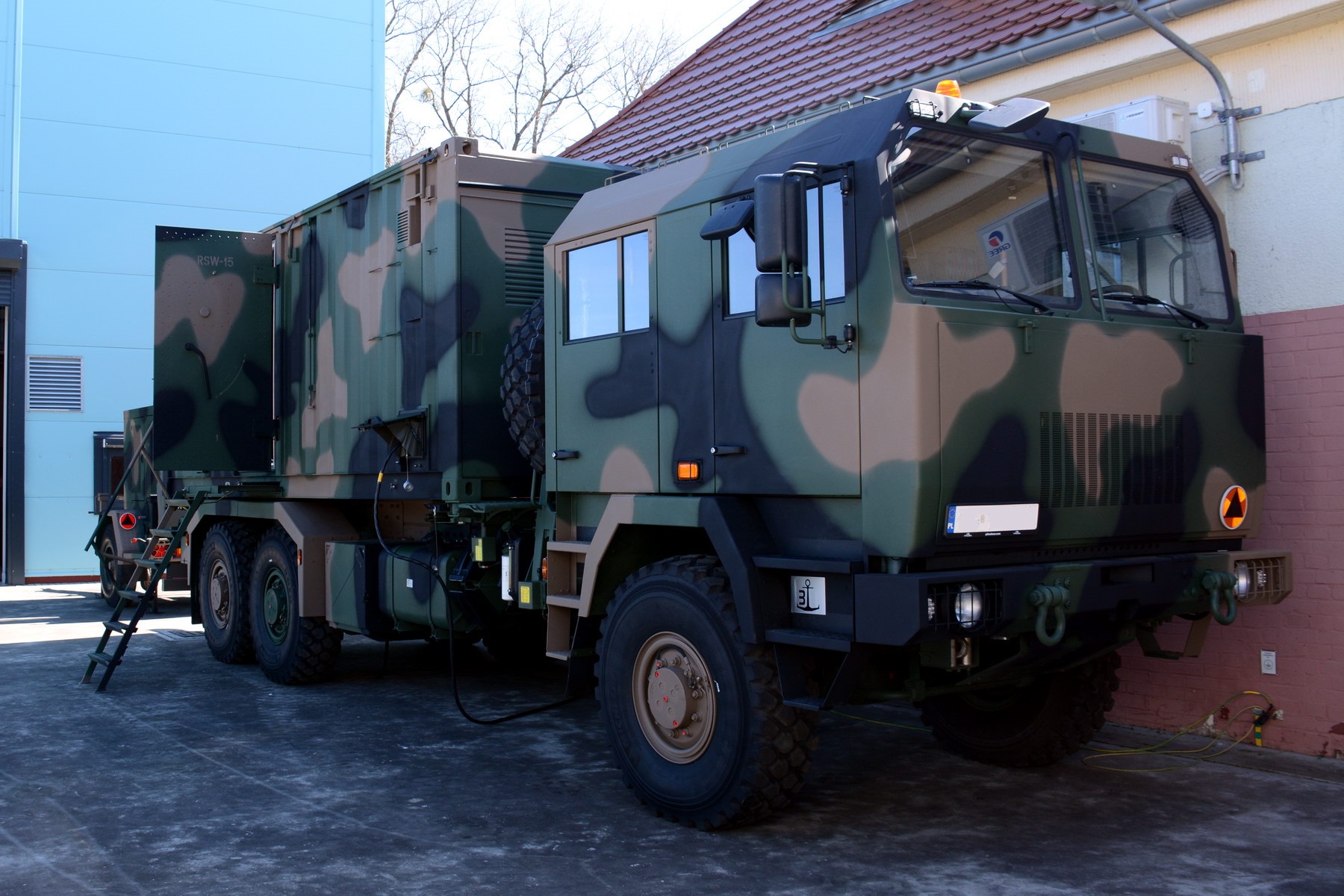 The RSW-15 mobile display station is housed in an air-conditioned container equipped with a protection system against weapons of mass destruction. It contains two operator workstations, communication systems, and interfaces for integration with external systems
The RSW-15 mobile display station is housed in an air-conditioned container equipped with a protection system against weapons of mass destruction. It contains two operator workstations, communication systems, and interfaces for integration with external systems
PIT-Radwar has been a supplier of radar equipment for the Polish military for decades. The first Nysa-A radars entered trial operation as early as the mid-1950s. This was followed by the introduction of 49 Nysa-B/Nysa-C systems, 66 Jawor/Bogota systems, 79 Jawor-M/Bogota-M systems, 71 Jawor-M2 family radars, and 30 Jawor-ML radars into service with the Polish Armed Forces. These were further developed into the N-31 rangefinders—still in service today—of which 48 units were delivered, and their successors, the N-31M/N-31MK (29 units), along with 47 N-41 height-finders. The TRS-15, produced in 28 units, continued this line of medium-range radar systems. Now, a new generation of advanced radar systems from PIT-Radwar is on the horizon.
Currently, the company is fulfilling a contract for 24 P-18PL radar stations for the Narew program, ordered on December 19, 2023. According to the agreement, deliveries are scheduled for 2027–2035. For the Radio-Technical Forces, PIT-Radwar has also developed the Warta long-range mobile radar station, which was presented at the latest MSPO defense exhibition. It is expected to be ordered by the Polish military in the near future, alongside the Passive Emitter Tracking and Passive Coherent Location (PET/PCL) system. Other radar systems are also in development, including the compact Tuga radar, being developed at the company’s Gdańsk branch.



